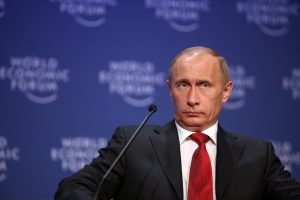And now what? Now, that France, Germany, the European Commission and so many of the Union’s capitals have embraced the principles of joint borrowing and the pooling of investments to deal with this crisis, now that all that remains is to negotiate a compromise with the States that are most committed to balanced budgets in order to achieve unanimity and take action, what is the next step?
It will be, of course, to define these joint investments that we are preparing to finance jointly to jump-start our economies and halt the rise in unemployment, but everyone feels that we also need… How to put it?
The word “programme” would be far too strong because, beyond the emerging consensus around the proposals of France, Germany, the European Parliament and the Commission, there is fortunately no ruling party or dominant party in Europe, not even a dominant party in limbo. There are left-wings, right-wings, Greens and centrists who do not share the same ambitions. This diversity is a political richness that is certainly not going to disappear. It is actually an asset which we would be very wrong to deprive ourselves of. There is therefore neither cause nor possibility to provide the European political forces with a common agenda, yet, at the same time, we European citizens, at all levels, in all mainstreams, in every country, we all feel a need to know what unites us and what separates us in the political landscape shaped by the effects of this pandemic.
So let us remember. The war had left us with a Europe to rebuild and to defend against the USSR. The post-war consensus on social protection, industrial policies and the common market emerged from this need. The success of the “Glorious Thirty”, together with the rise in the price of raw materials and the gradual implosion of the Soviet system had opened the way to a new era. For some forty years, from the first election of Margaret Thatcher to the first deaths of Wuhan, the “Washington Consensus” defined the policies of the five continents proclaiming that the State was not the solution but the problem, that too much taxation was killing taxation, and that the development of free trade was bringing democracy with it.
Like Brezhnev’s USSR, this neo-liberalism had shown signs of running out of steam long before collapsing, but in the last three months it happened. The State is once again becoming the solution. Public debt is no longer the legacy we should not leave to our children but the inevitable tool for saving their jobs. We are entering a third era, the most glaring sign of which is Germany’s abandonment of its schwarze Null, its demand for a zero deficit.
After the long reign of Adam Smith, Keynes is coming back strong, but where do our political forces stand and what objectives do they agree on?
This is what we need to understand, to say and to know today because, as useless and futile as it would be to aspire to give a common programme to the major European parties, all the more do we need to define this “Brussels Consensus” which now replaces the Washington consensus and could well win the world as Thatcherism had done yesterday.
So let’s read, let’s look, let’s listen. Not everyone has the same conception of the pace at which we should move to a new industrial model, but apart from vague and negligible differences, everyone agrees on the need for a green transition that could limit global warming. This first point of consensus is so real that, even before the pandemic, all the Commission’s proposals were based on its “Green Deal”, its “Green Pact”, whose idea the Parliament had promoted by an overwhelming majority.
The second point of the Brussels Consensus is that we must focus our resources on a concerted effort in industrial research and modernisation, in other words on a common industrial policy aimed, in this case, at not missing out on the technological turning point brought about by the artificial intelligence.
The third point of this consensus is that we can no longer rely on an international division of labour in strategic areas and that the European Union must aim, as China and the United States are doing, for industrial sovereignty that would protect it from external dependence.
The fourth point of this consensus is that the Union must, like the United States and China, have the means of its political sovereignty, in other words a common defence and diplomacy. In black and white in the Franco-German proposals and between the lines in the Commission’s proposals, the fifth point of this consensus is that the Member States of the Union must not delay any longer in harmonising their tax and social protection systems.
As for the sixth point of this consensus, it is – as we know – that the Union must no longer refuse to take on joint debt when it is about pooling debts but about investing in the future, that the Thatcherian page should be turned and another one opened: that of the Brussels Consensus.
Now we see it clearly. As much as there is convergence on these six points, there are also differences of opinion on what should be the Common Defence, the Green deal, industrial policies or relations with China or Russia like. There is no dominant party in the Union, but the consensus that is forming is so essential, innovative and forward-looking that it is urgent to tell Europeans that they are not getting lost in the fog but are, on the contrary, moving towards a common horizon and that the Brussels Consensus brings together between two-thirds and four-fifths of their political forces – a more than qualified majority.



